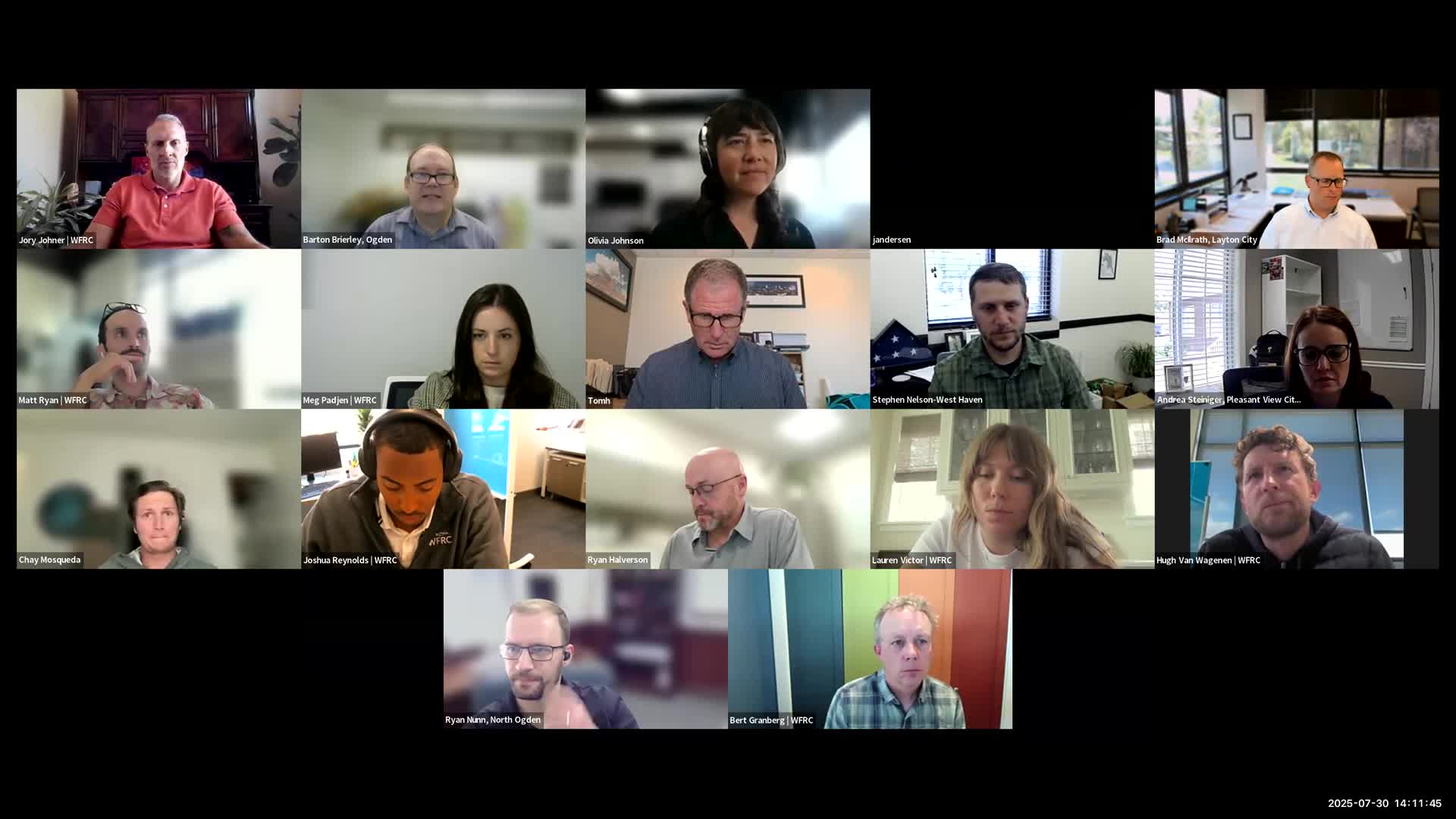Layton City Official Highlights Growth Initiatives and Community Features
July 31, 2025 | Wasatch Front Regional Council, Utah Lobbyist / NGO, Utah Legislative Branch, Utah
This article was created by AI summarizing key points discussed. AI makes mistakes, so for full details and context, please refer to the video of the full meeting. Please report any errors so we can fix them. Report an error »

In a recent meeting of the Regional Growth Technical Advisory Committee (TAC) held on July 30, 2025, in Ogden-Layton, key discussions highlighted the ongoing developments and future plans for Layton City, Utah. The meeting featured a presentation by Brad, a city representative, who outlined several exciting initiatives that align with the Wasatch Front Regional Council's (WFRC) goals for centered focus planning.
Brad began by sharing demographic insights, noting that Layton's population has reached approximately 84,348, positioning it close to Ogden City. He emphasized the city's educational and healthcare infrastructure, mentioning two high schools and two hospitals, including the newly established Intermountain Layton Hospital. Additionally, he pointed out Layton's strategic location, with the main entrance to Hill Air Force Base situated within the city, which has facilitated partnerships with defense contractors.
The presentation also showcased Layton's cultural and recreational offerings, such as the Ed Kenley Amphitheater, which hosts various summer events, and the Layton Surf and Swim wave pool, a local favorite since 1986. Brad highlighted the Vietnam Veterans Memorial, an 80% replica of the Washington D.C. memorial, which honors the 366 Utah residents who lost their lives in the Vietnam War, including six from Layton.
Brad provided historical context, explaining that Layton was established in the 1850s as an agricultural extension of Kaysville and formally incorporated in 1920. He noted the city's evolution, particularly its growth influenced by Hill Air Force Base, which has shaped its development patterns.
A significant focus of the meeting was Layton's general plan, adopted in February 2019, which emphasizes centered growth and urbanization. Brad discussed the Eastgate Business Center, a research and development park designed to support defense contractors, and the West Davis Business Center, which is poised for future development. He also mentioned ongoing urbanization efforts in historic downtown and Midtown areas, including mixed-use projects that aim to revitalize these districts.
The committee addressed the current status of the Layton Hills Mall, which has recently changed ownership. The new owners are investing in renovations and exploring peripheral development opportunities, although no comprehensive redevelopment plans are in place yet. The mall continues to perform well in terms of sales tax generation, despite the broader challenges facing retail spaces.
In conclusion, the meeting underscored Layton City's proactive approach to growth and development, with a clear vision for enhancing community infrastructure and urban spaces. As the city continues to evolve, the emphasis on collaboration with stakeholders and responsiveness to community needs will be crucial in shaping Layton's future. The committee anticipates further discussions on these initiatives in upcoming meetings, as they work towards realizing the city's development goals.
Brad began by sharing demographic insights, noting that Layton's population has reached approximately 84,348, positioning it close to Ogden City. He emphasized the city's educational and healthcare infrastructure, mentioning two high schools and two hospitals, including the newly established Intermountain Layton Hospital. Additionally, he pointed out Layton's strategic location, with the main entrance to Hill Air Force Base situated within the city, which has facilitated partnerships with defense contractors.
The presentation also showcased Layton's cultural and recreational offerings, such as the Ed Kenley Amphitheater, which hosts various summer events, and the Layton Surf and Swim wave pool, a local favorite since 1986. Brad highlighted the Vietnam Veterans Memorial, an 80% replica of the Washington D.C. memorial, which honors the 366 Utah residents who lost their lives in the Vietnam War, including six from Layton.
Brad provided historical context, explaining that Layton was established in the 1850s as an agricultural extension of Kaysville and formally incorporated in 1920. He noted the city's evolution, particularly its growth influenced by Hill Air Force Base, which has shaped its development patterns.
A significant focus of the meeting was Layton's general plan, adopted in February 2019, which emphasizes centered growth and urbanization. Brad discussed the Eastgate Business Center, a research and development park designed to support defense contractors, and the West Davis Business Center, which is poised for future development. He also mentioned ongoing urbanization efforts in historic downtown and Midtown areas, including mixed-use projects that aim to revitalize these districts.
The committee addressed the current status of the Layton Hills Mall, which has recently changed ownership. The new owners are investing in renovations and exploring peripheral development opportunities, although no comprehensive redevelopment plans are in place yet. The mall continues to perform well in terms of sales tax generation, despite the broader challenges facing retail spaces.
In conclusion, the meeting underscored Layton City's proactive approach to growth and development, with a clear vision for enhancing community infrastructure and urban spaces. As the city continues to evolve, the emphasis on collaboration with stakeholders and responsiveness to community needs will be crucial in shaping Layton's future. The committee anticipates further discussions on these initiatives in upcoming meetings, as they work towards realizing the city's development goals.
View full meeting
This article is based on a recent meeting—watch the full video and explore the complete transcript for deeper insights into the discussion.
View full meeting

